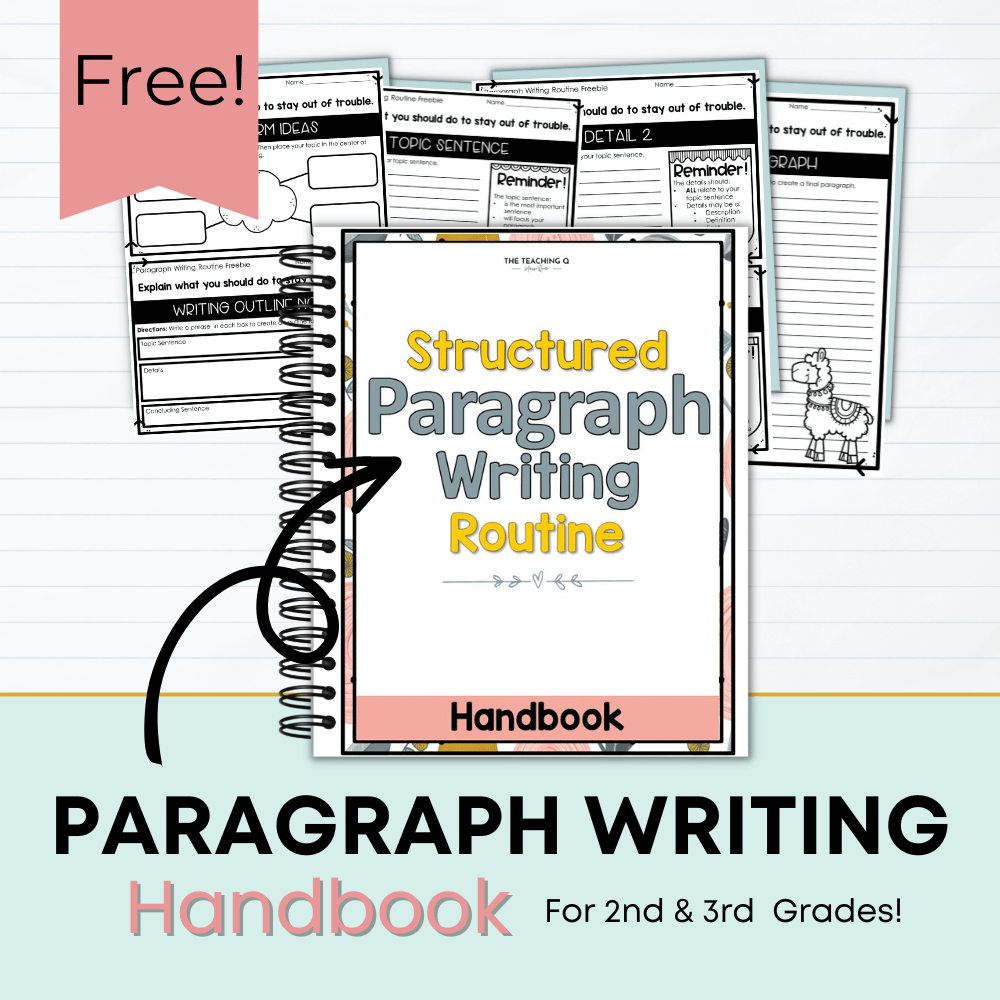Informational writing can be simple to teach young students if you follow this outline and your lessons are interactive and motivating.
Features of Informative Writing
If you’re like me and teaching elementary students, the first step in any writing lesson is laying the foundation. That’s why I explicitly teach students the feature of informational writing first.
Students need to know that informational writing:
- Explains a topic
- Provides facts and definitions related to the topic
- Using linking words to connect ideas
- Includes a conclusion
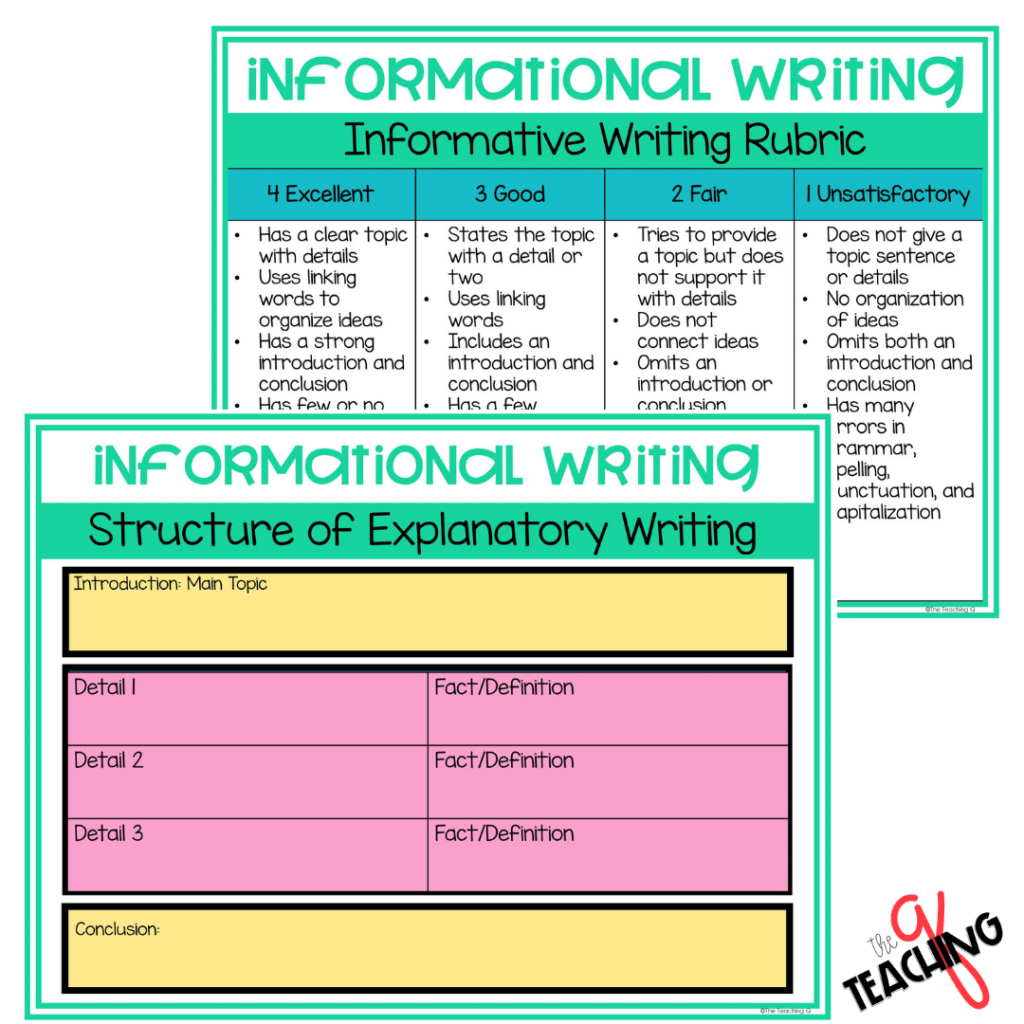
Informational Writing Structure
Students are now ready for the informational graphic organizer. Each feature of the informative writing learned earlier fits nicely in the graphic organizer. (For some reason, students are shocked by this demonstration.)
To take it a step further, hand out the Informational Writing Rubric. Students see that each piece of the graphic organizer is also on the writing rubric during this time.
I like to make a big deal of handing over the “magic” to a beautiful writing score.
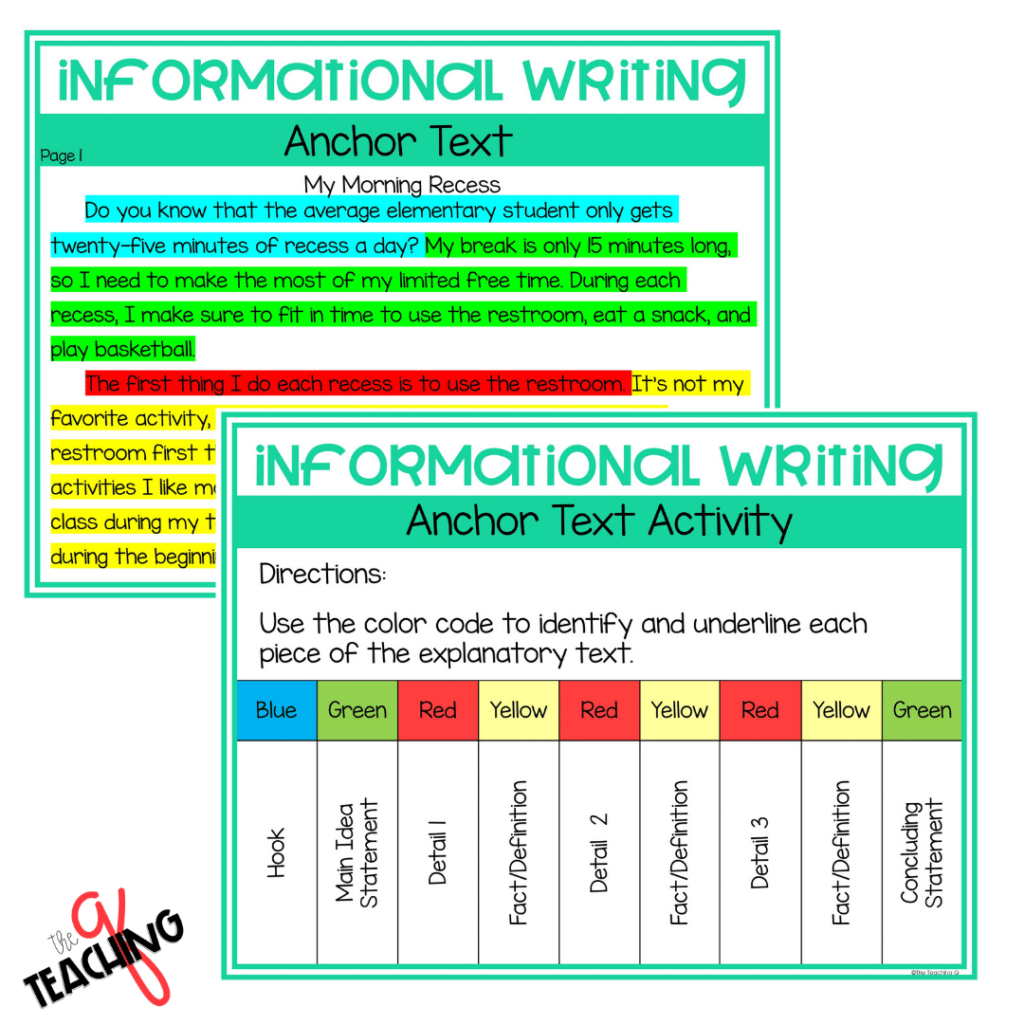
Anchor Text Activity
Now that students are familiar with the structure of informational writing, they are ready for the anchor text. The purpose of the anchor text is to provide a strong example of an essay.
I typically spend an entire writing period with the students, identifying each of the informational writing elements in the anchor text.
I call this activity the Color Code the Text. For the printable version, each student has a copy of the anchor text and using highlighters or crayons to color each element. For the digital version, each student drags the highlighted marks over the text.
If this is my student’s first exposure to the activity, we do the activity together as a whole class.
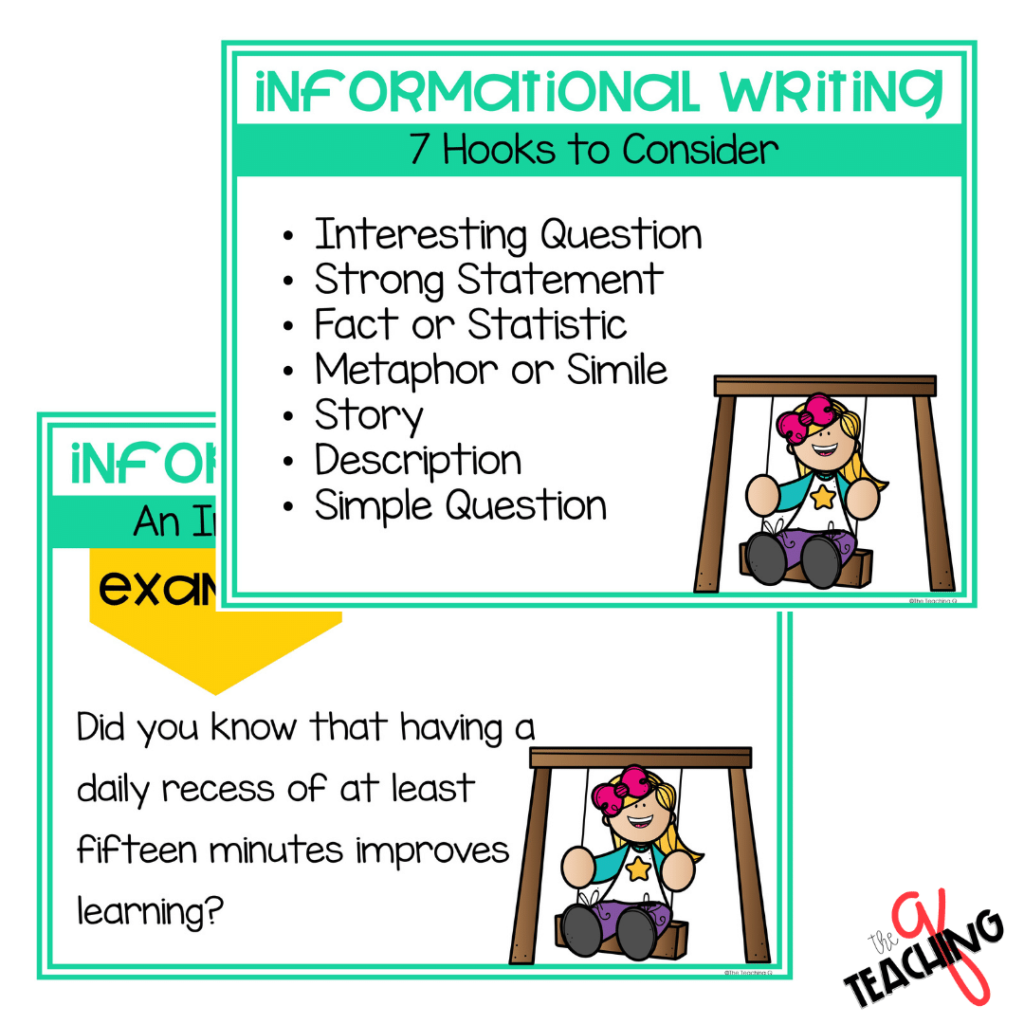
Teaching the Introduction
It’s essential to let young writers know that the purpose of the introduction is to get the reader’s attention and let them know the topic you will be discussing.
For this reason, I teach a mini-lesson on seven types of hooks. Most importantly, this exposes students to samples of each kind of hook before writing their own.
The second mini-lesson to teach students is how to write the main idea statement. We spend a great deal of time practicing how to say the main idea before with write.
Often, students mistakenly elaborate with details within the introduction, so this is an area to stress early. (Make the corrections early before it’s out of hand.)
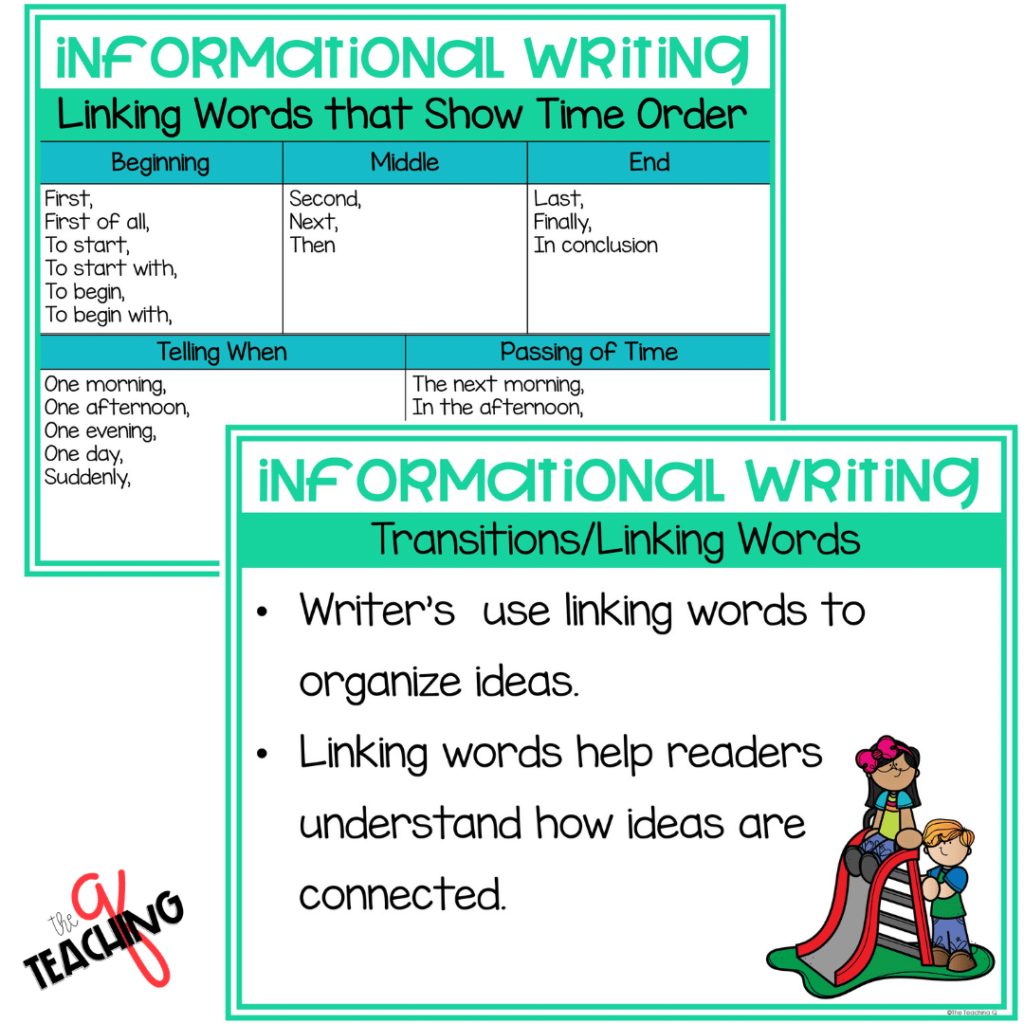
Supporting Details
Now your students are ready to elaborate and give all the related facts. But before I let them write, I make sure they’ve had ample practice providing details with task card activities.
Another element of the rubric and structure of informative writing is the use of linking words. I’ve found that a simple list of possible linking words is worth its weight in gold.
Once students have added linking words to their writing, I allow the class time to share their masterpieces. (My students always love to share.
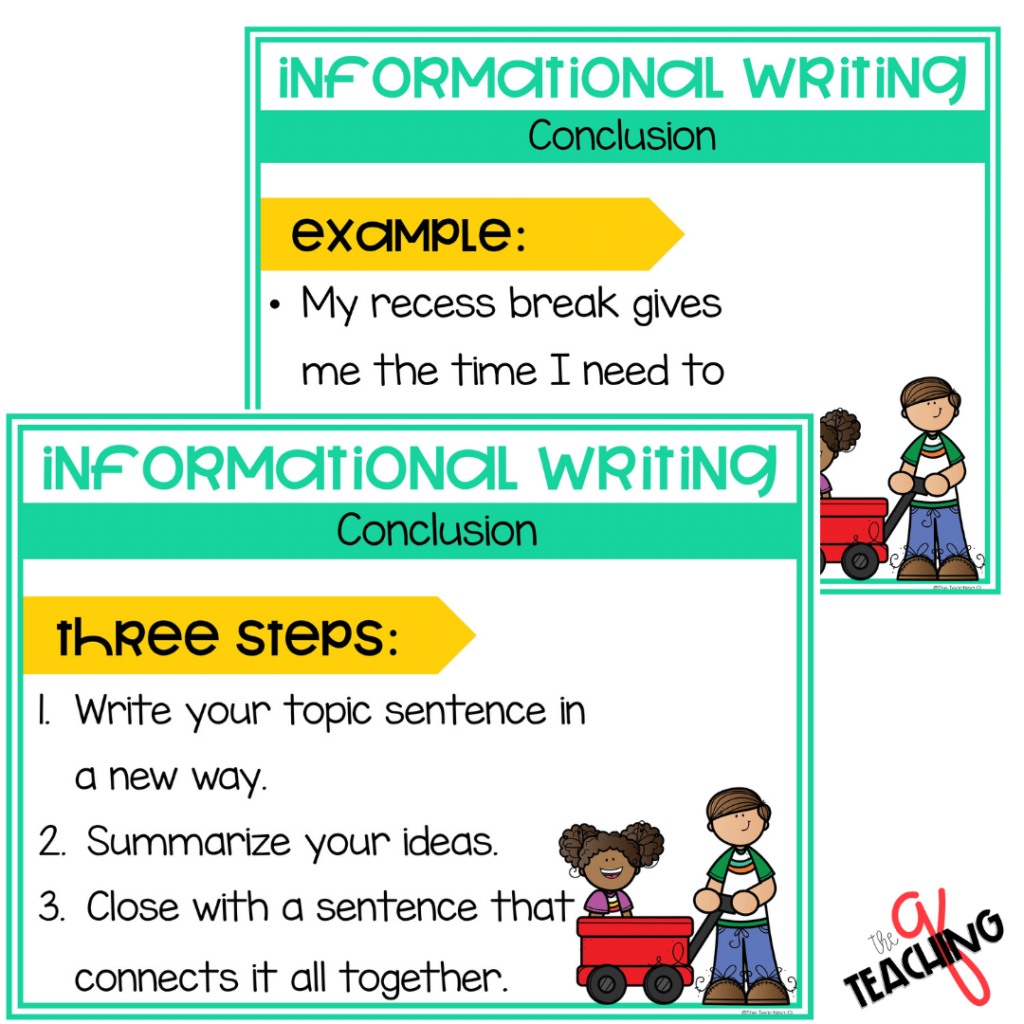
Conclusions in Informational Writing
Finally, we’re at the last few steps of the informational writing process. An enormous beast to conquer is teaching the concluding statement.
I teach students to write conclusions with three simple steps.
- Turn the topic sentence around
- Summarize your ideas/points
- Use a closing sentence to connect the ideas
By following this simple format, students are ready to edit, revise, and publish their writing! (Ta-da!)
If you want the ready-made resources, you can pick them up in my Teachers Pay Teachers Store here.
Below are a few prompts from my Informational Writing Units that you may be interested in purchasing.
Each of the resources is in a printable and digital form together.
You may also want to read my blog post on 5 Narrative Writing Essentials or Opinion Writing Streamlined in 5 Days.

Are your students struggling and making very little progress in writing? Or maybe they’re unmotivated or a reluctant writer? If so, I’ve got your back.
Yes…I…Do!
Let me share my secret sauce when it comes to teaching writing to elementary students.
It’s the Sentences, Paragraphs, and Essays: OH, MY! E-book.
Click this link to learn more about how the E-Book can transform your students’ chicken scratch, hap-hazard writing into strong, effective, glorious writing!
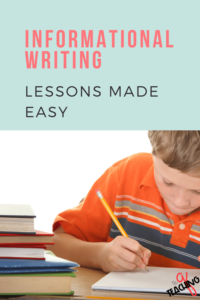
Melissa


